Sum Building, game A70 from the Math Card Games book, is a puzzle-like game that is quite addicting! In fact, even as I was preparing for this blog, I found myself playing a few rounds instead of starting on dinner…. So, if you need a summer break from cooking – this might be the game for you!
You need the Basic Card Deck without the 10s, shuffled well. Each player draws ten cards. Then they use the cards to create one complete addition equation using any or all of the ten cards in their hand.
In my example, I drew the cards 3, 3, 6, 8, 9, 0, 4, 5, 4, 2.
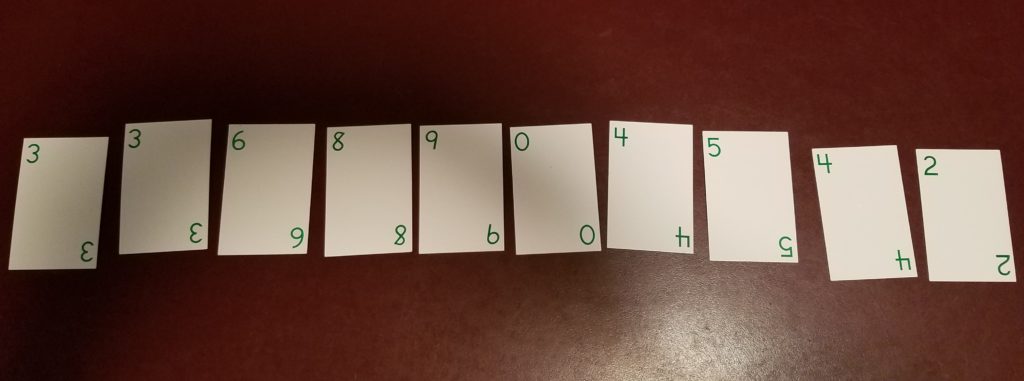
For the younger player, the equations might be very simple. Here we have 4 + 4 = 8.
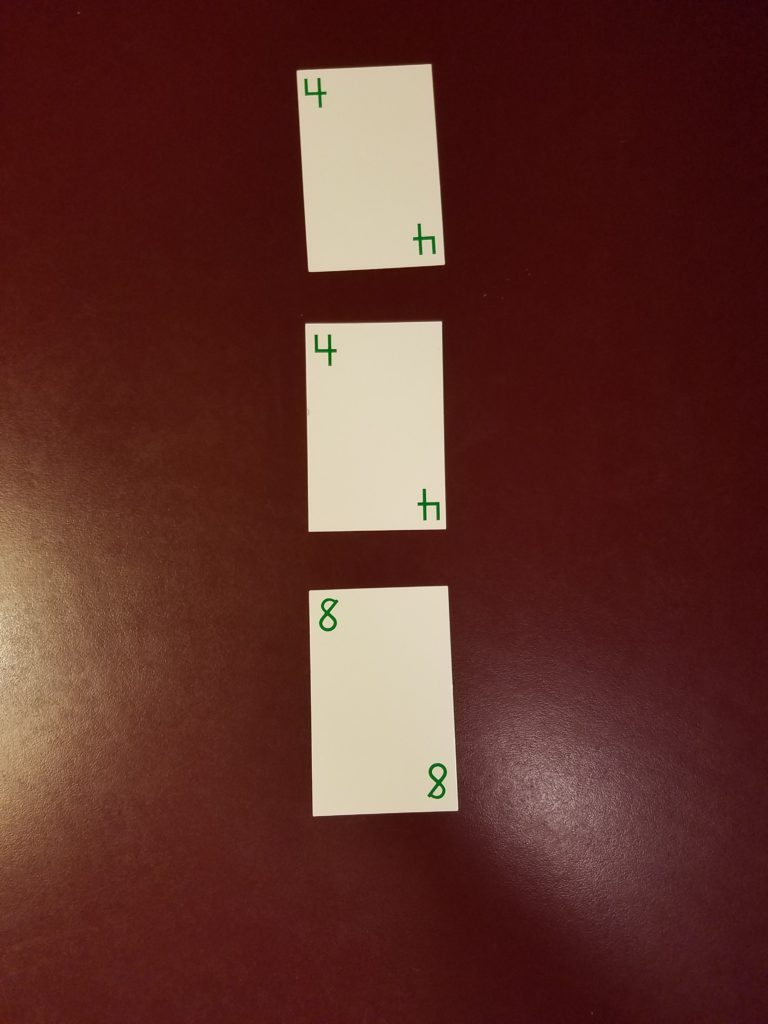
As experience and understanding grows, so can the equations. The first picture below is 4 + 4 + 2 + 8 + 9 + 3 = 30 and the second is 34 + 34 = 68. The first equation uses eight cards and the second uses six cards. Since we want to use as many cards as possible, the first equation would be better.
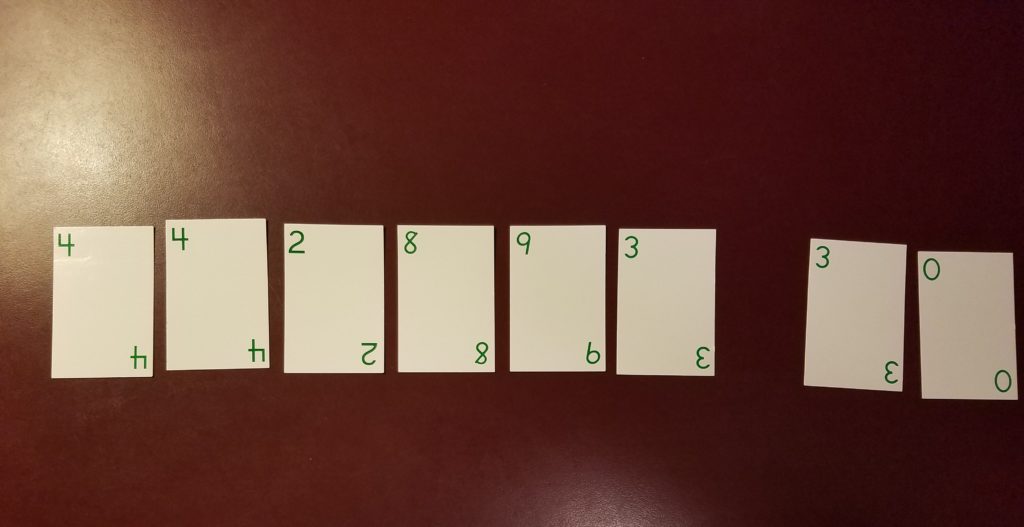
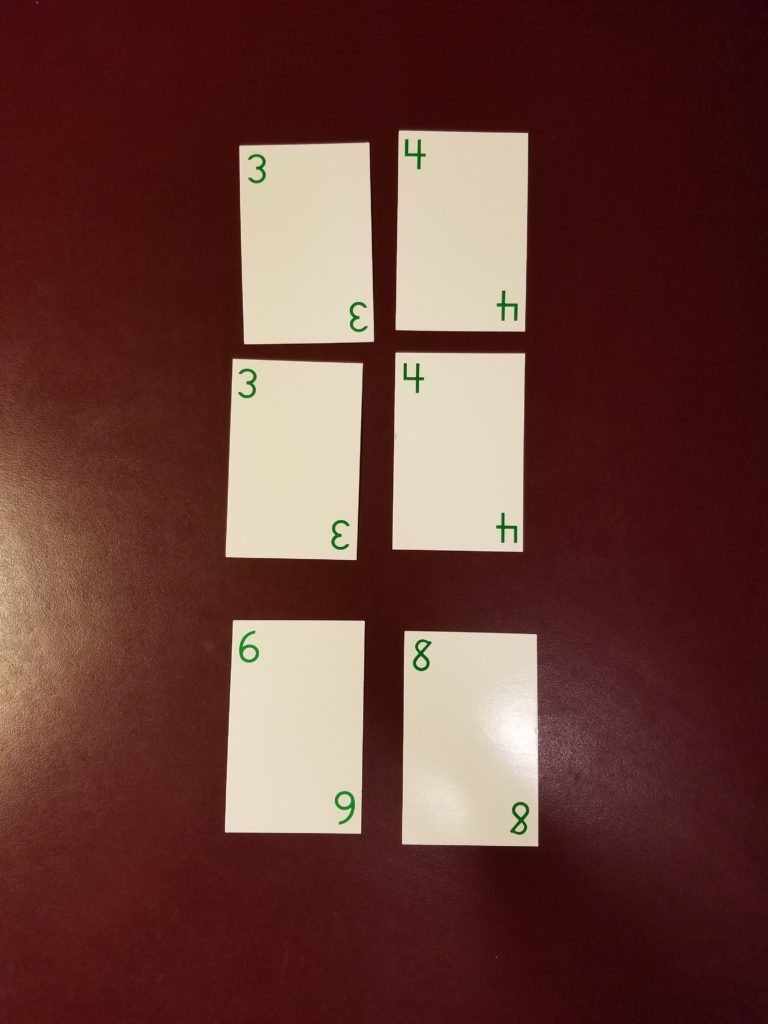
For the more advanced students, the equations can continue to get more complex.
See how I have 58 + 304 + 2 = 364 and 348 + 342 = 690? Both use nine cards.
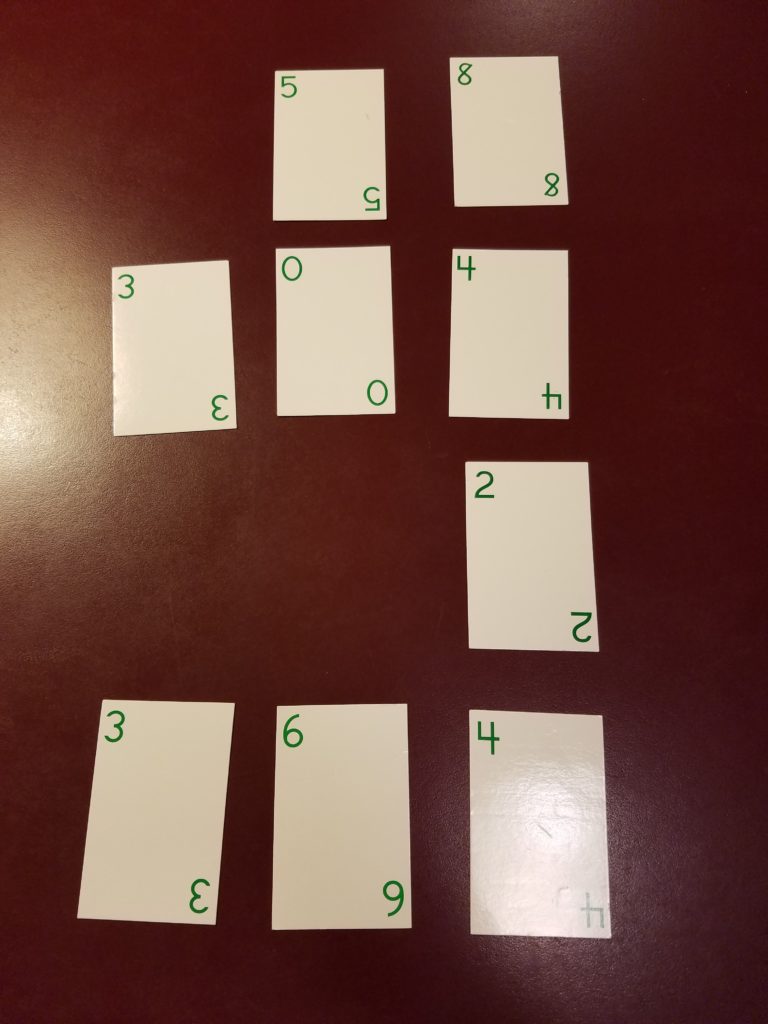
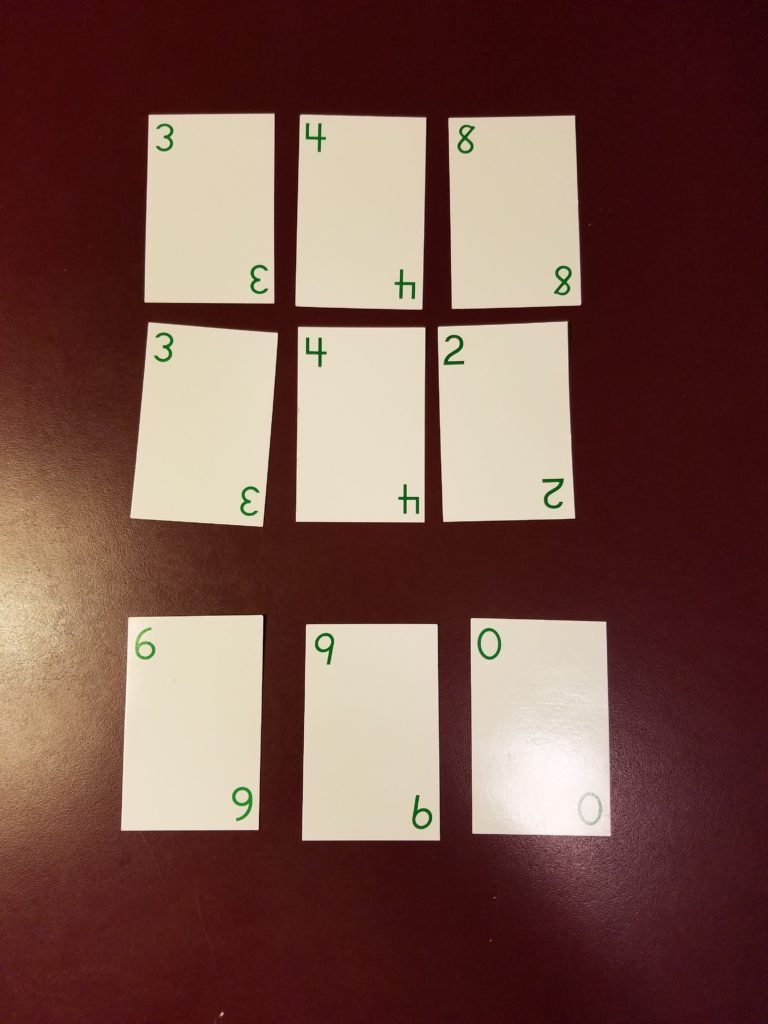
Since the goal of the game is to collect the most cards, each player will want to use as many cards as possible in their sum building for each hand.
Here are a few guidelines:
- A number may not start with a zero.
- A zero may not be used by itself.
- Blank spaces between numbers are not allowed.
- Only one equation may be built per turn.
Once the equation is completed, the player collects all the cards they were able to apply to the single equation. The remaining cards are returned to the stock deck and reshuffled in.
To continue each turn, the players draw another ten cards from the deck and play again. The game has four rounds suggested, but can be played as many times as desired.
Once the game is over, the players compare their decks of used cards to see who has the most cards. The player with the most cards is the winner.
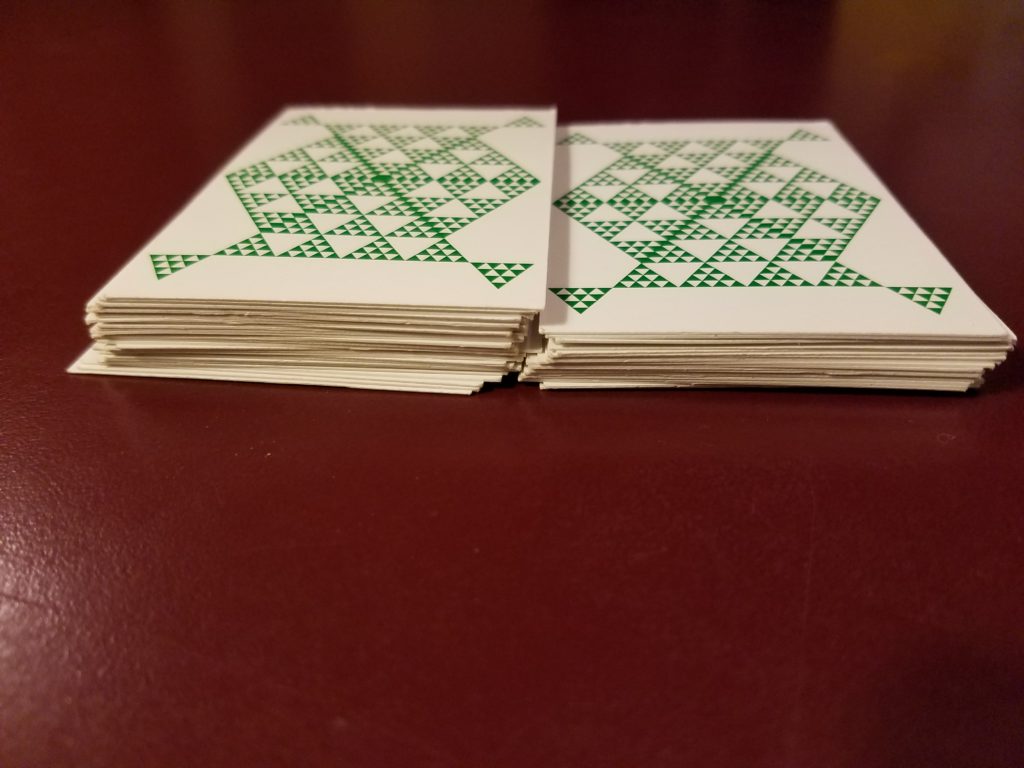
I hope you have a great time playing this game! And, as a helpful hint, if you and your children play so long that dinner doesn’t get started, DoorDash and GrubHub can deliver food to your door. Just saying!
